Is the Sony a7 II still worth buying? It isn’t the latest camera in Sony’s a7 line, but it’s still a powerful full frame camera with a ton of excellent functions and features.
While some will prefer the newer models, we believe the Sony a7 II is still a fantastic mirrorless camera. It’s also more affordable than the Sony a7 III or a7 IV, and has a lot going for it besides.
In this in-depth review of the Sony a7 II we examine all the camera’s strengths and weaknesses. We’re honest in our findings, and we know it falls short compared to newer full frame cameras. But we’ll show you why we think the Sony a7 II is still worth buying today.
Keep reading to find out more about the Sony a7 II.
The Sony a7 II (ILCE-7M2) is a full frame mirrorless camera. Sony released the camera in November 2014 as an upgrade to the original a7.
Sony designed this camera as a great general-purpose camera. It is offered alongside the specialized a7R II and a7S II. In the Sony lineup, the R Series has a higher resolution. And the S series features amazing low-light performance and video.
Since the release of the a7 II, Sony has upgraded each camera in this series at least once. We’re now up to the Sony a7 IV in the original series.
The company has also introduced the a9 and a9 II cameras. These are designed for sports and action photography.
The most expensive edition to the Alpha range is their flagship camera, the Sony a1.
I travel with an a7 II as a backup body. I often either have a wide-angle or telephoto lens attached. I had the Sony FE 100-400mm f/4.5-5.6 GM OSS in this case below.
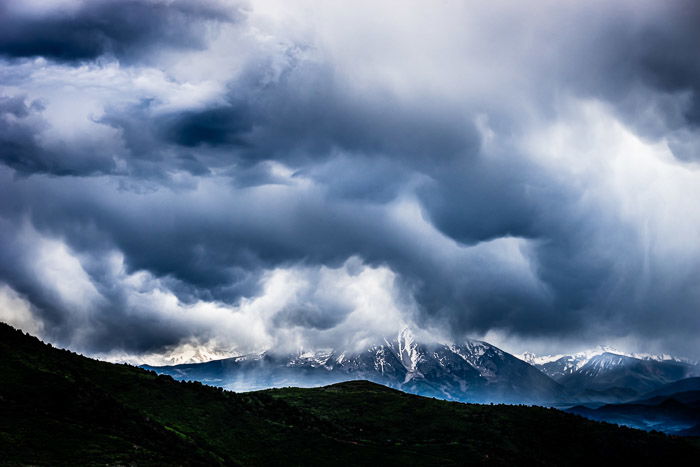
An unexpected close-up of a weather pattern forming over a distant peak
All cameras in the Alpha series are professional or semi-professional full frame cameras. Cameras in this series use the E-mount system and are compatible with FE lenses.
You can safely invest in high-quality E-mount lenses. They’ll work on upgraded camera bodies like the Sony a1 or a7R V.
Sony also offers a line of advanced amateur crop sensor cameras. These also use the E-mount system. This makes them attractive backup cameras. That’s because they use the same lenses as their full frame cousins.
But the APS-C bodies are not simply watered-down versions of the full frame systems. Sony often includes its best features in the crop sensor bodies. This is the case with the Sony a6700, released in July 2023.
It is easy to get overwhelmed by Sony’s mirrorless camera offerings. Comparing the Sony a7 II with the flagship Sony a1 is unreasonable. You can buy four of these bodies for one Alpha 1.
But is it still worth buying the a7 II with the upgraded a7 III and a7 IV on the market? We think it is, but read on to find out why.
The Sony a7 II is a general-purpose, semi-professional camera. It is for the advanced amateur. It’s for those looking for an entry-level full frame camera. The availability of newer versions of this camera reduces the price.
You can use this camera in most travel, street, and family photography situations. But as we will see in this review, the camera has limitations for action photography.
Photographers who make large prints are better off with the higher resolution a7R IV or a7R IV. And photographers who do a lot of concert photography or photograph in other low-light situations? They should consider the a7S II or III.
Let’s look at some key features of the Sony a7 II. This will help you decide whether this is the camera body for you. We pay particular attention to how this camera compares with the upgraded a7 III and a7 IV and the crop sensor a6700.
Sony is one of the world leaders in sensor production. So it’s no surprise that their cameras feature some of the best sensors around. The a7 II has a full frame 24.3 MP Exmor CMOS sensor. This gives a maximum resolution of 4000 x 6000 pixels.
The sensor on the a7 III is similar in resolution (24.2 megapixels). But it uses an improved Exmor R CMOS sensor with back-illuminated (BSI) technology.
The Sony a7 IV, on the other hand, sees a big jump in megapixels, with a 33 MP resolution. You will see a significant improvement in image quality, including in areas like low-light performance.
The a6700 uses a 26 MP APS-C Exmor CMOS sensor. This is impressive for an APS-C cameras, but the a7 II still pips it for overall image quality. The full frame sensor and superior processor give you better dynamic range and low-light performance than the a6700.
It is easy to mistake more megapixels (MP) for better camera quality. But the 24 MP size is a good choice for many cameras. It balances image resolution with overall speed and performance.
The flagship Sony a1 model increases sensor resolution to 50.1 MP. But Sony has kept 24.2 MP sensors on the more expensive a9 series for sports and action photography.
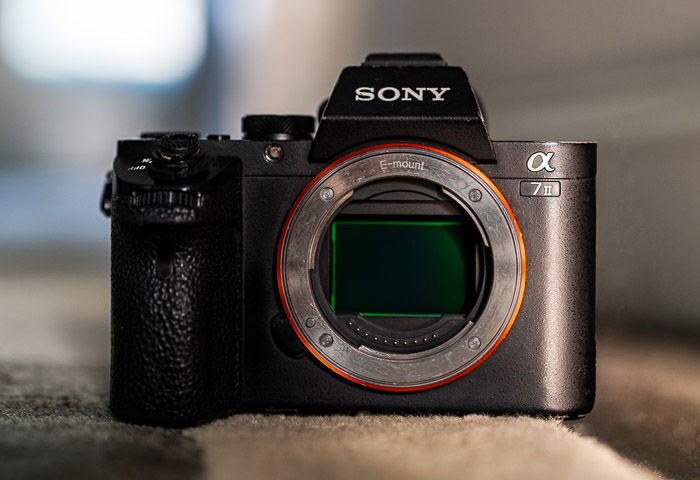
The Sony a7 II captures 14 stops of dynamic range. The a7 III adds an extra stop of dynamic range, which continues into the a7 IV. This isn’t a big improvement, and you only really need the extra stop if you do a lot of work in very low light.
Sony cameras are some of the best on the market in terms of dynamic range. And this camera is no exception. The a7 II can capture everything from dark shadows to bright highlights.
ISO on the a7 II ranges from 100 to 25,600. The results are good up to ISO 6,400. But Sony has improved ISO performance on the newer version of the camera.
ISO on the a7 III is double that of the earlier model (100 to 51,200, expandable to 204,800). And the ISO performance of the a6700 falls between the two.
In low-light situations, the a7 III gives good results up to ISO 12,800. The camera has an ISO of 100 to 32,000 and is expandable to 102,400.
The ISO of the Sony a7 IV is equal to the a7 III, with an expandable range of 50 – 204,800. The 50 ISO setting helps you maximize the image quality from the 33 MP sensor.
The higher MP count also helps with the low noise levels at high ISO settings. You can go beyond 12,800 and still get relatively noise-free images in low light.
I took the photo below with the a7 II. You can see the noise in this lotus flower at ISO 4,000. But it is nothing a little noise reduction can’t handle in post-processing.
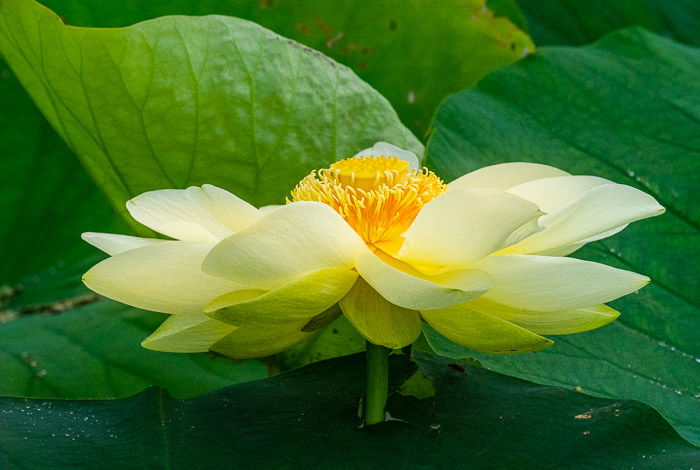
The Sony a7 II was the first of the a7 series to include in-body image stabilization. It includes five-axis compensation. This has become standard on Sony cameras.
It allows you to handhold the camera at slower shutter speeds. Even at 1/10 s, a good percentage of handheld shots are sharp.
On the a7 models, you can shoot in RAW, JPEG, or both. And you can choose between three levels of JPEG quality (standard, fine, or extra-fine).
In RAW, you can select 14-bit compressed or uncompressed files. The a6700 creates both JPEG and RAW files. But the RAW files are compressed.
In general, the a7 II creates good-quality images at a competitive size. And this is true even with the more expensive cameras in the Alpha series.
The camera will struggle more at higher ISOs. But differences are minimal during everyday shooting conditions. The image stabilization is slightly better in the newer models. But the a7 II is almost as good.
The autofocus (AF)) system in the Sony a7 II is an improvement from the previous generation. The fast hybrid AF system uses both phase and contrast detection points. This hybrid system is now standard in Sony cameras.
The a7 II includes 117 phase detection and 25 contrast detection autofocus points. And Sony has continued to improve its cameras’ AF speed and tracking capabilities.
The upgraded a7 III has 693 phase detection points and 425 contrast detection points. It’s a hybrid AF system with a significant and noticeable improvement in focusing ability.
AF in the Sony a7 IV goes one step further, using a 759 phase-detection and 425-contrast detection points. You also get real-time tracking for humans, animals, and birds.
The Sony a7 II’s AF system is still decent for most types of photography, but system found in the a7 IV is much improved in every respect.
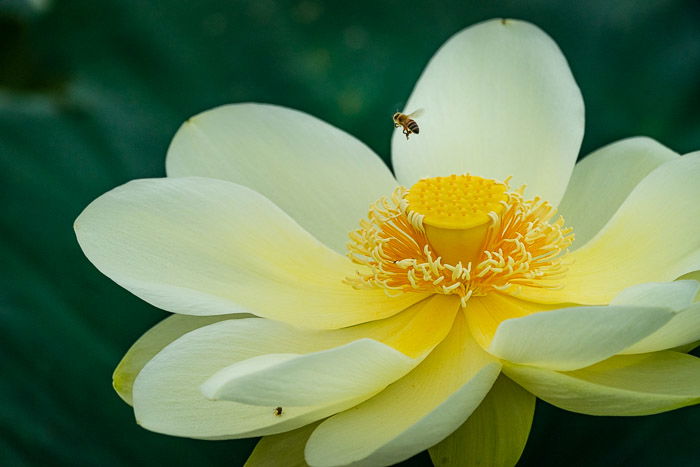
Taken with the Sony a7 II
The newer model focuses faster in general. But it’s especially faster in low-light situations.
The a6700 also has an improved autofocusing system with 425 phase detection points and 425 contrast detection points. This includes real-time subject tracking.
This uses artificial intelligence (AI) for faster and more accurate focusing. The camera analyzes colors, patterns, and depth. And it can recognize faces and eyes.
It is not impossible to track motion with the a7 II. It is just more difficult than with newer versions of the camera.
Sony has made significant improvements in autofocus speed and tracking. But many photographers find that the autofocusing system in the a7 II is all they need.
The extra AF points and tracking capabilities of the a7 III, a7 IV, and a6700 are most useful when photographing sports and wildlife.
The Sony a7 II includes face detection and recognition. The camera’s autofocus works on both animal and human faces. Eye detection is also advertised as a firmware upgrade. But I have never used it.
Eye detection only works in AF-S mode and with certain lenses. None of my Sony E-mount lenses work with eye detection. But face and eye detection work well on my a7R III.
Continuous shooting frame rate is another area that Sony has improved in newer versions of their cameras. The a7 II has a burst rate of 5 frames per second (fps). This is similar to the frame rate of the original version of the camera.
The a7 III increases the burst rate to 10 fps, which is the same on the a7 IV. The a6700 has the fastest burst rate of 11 fps.
The newer cameras also have larger buffers. The a7 II can handle about 20 RAW images or 50 JPEGs at full speed, so you can still do some decent action photography.
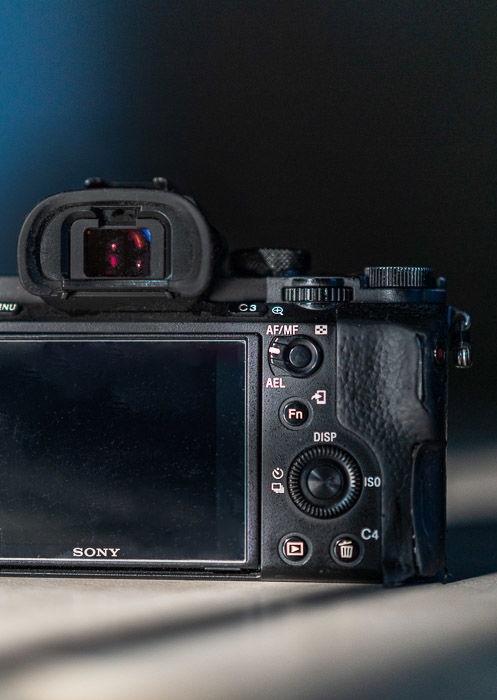
The a7 III can handle 89 RAW photos or 177 JPEGs. The a6700 lies between the two models and can buffer 46 RAW files or 99 JPEG images.
The buffer actually drops for the a7 IV, but that’s because the files sizes are larger thanks to the increased resolution.
The larger buffer means you can shoot longer bursts on the newer models. The camera continues saving in the background. And you don’t have to wait for the buffer to clear.
This is really only an issue if you shoot wildlife or sports when you use continuous shooting mode a lot.
The Sony a7 II shoots Full HD video at 24, 30, and 60 fps in XAVC S format at 50 Mbps. It does not take 4K video like the newer Sony models or the a6700.
Both the a7 II and a7 III models are limited to 29 minutes of video recording. The a6700 records video for as long as the memory card and battery last.
The same is true of the Sony a7 IV. It actually has a 13-hour record limit, but even the biggest memory cards will fill up by then.
You can use the a7II to create short video clips in HD. But the a7S series was created to specialize in low-light photography and video. The a6700 is a better camera for video.
Sony redesigned the a7 II from the original a7 body. It is slightly larger and heavier than the original. And it has a more substantial grip. It measures 126.9 x 95.7 x 59.7 mm (5 x 3.8 x 2.4 inches) and weighs 556 g (1.22 lbs).
Sony largely modeled the newer a7 generations on the second-generation body. But the grip is larger to accommodate larger batteries. The crop sensor body is smaller at 120 x 66.9 x 69.3 mm (4.72 x 2.63 x 2.73 inches). And it’s lighter at 503 g (1.11 lbs).
The feel is not significantly different between the a7 II and III. There are more function buttons on the newer version. And you use a joystick to move focus points and AEL and AF-On buttons. (These are AutoExposure and AutoFocus.)
The a7 III moves the video record button from the side of the camera to a more convenient position near the right thumb. The C3 customization button was also moved and is now controlled by the left thumb.
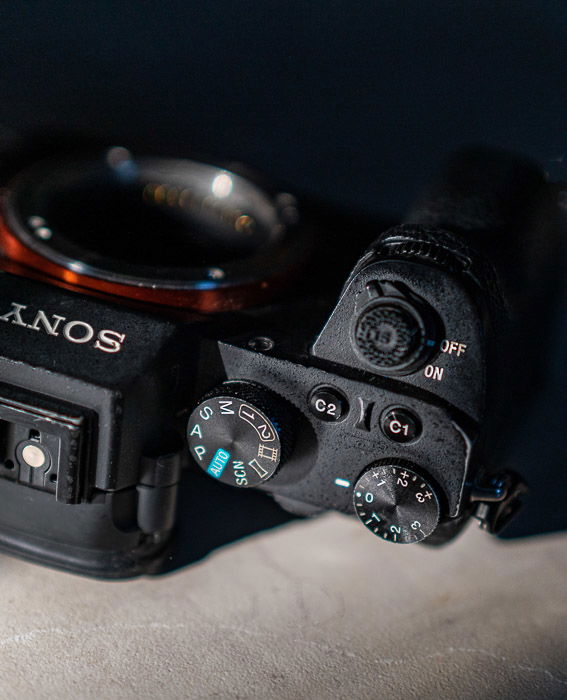
The Sony a7 II has a three-inch articulating LCD monitor. It has 1.23M dots of resolution. This is a slightly better resolution than the a7 III.
The screen tilts 90 degrees to allow for high- or low-level shooting. There is a slight redesign in the LCD screen. And it makes the newer generation easier to tilt.
But the APS-C camera screens allow for tilt and 180 degrees of rotation. This is particularly useful when shooting videos.
A touchscreen is missing from the a7 II, which is now standard on the more recent a7 models. This isn’t necessarily a dealbreaker. But it’s a sign that this camera is from an older generation.
The a7 II has the same electronic viewfinder as the a7 III. But the newer model has a slightly higher magnification.
The electronic viewfinder on the a7 IV has a 3.69M-dot resolution. This gives you incredible accuracy when composing your shots.
The Sony a7 II has only one UHS-1 card slot. Sony included two card slots in the Alpha series to be competitive with professional-level DSLRs.
The a6000 series continues to have only one card slot. And one card slot is fine for most photographers. Only photographers who need the faster UHS-II card slot or need to back up their images will notice the missing second card slot.
The a7 II uses NP-FW50 batteries. These are smaller than the newer NP-FZ100 batteries in the a7 III and a7 IV cameras. You can take about 350 images on one fully charged battery.
The limited battery life is a known problem with the early Alpha cameras. Using this camera means carrying more batteries and planning for frequent recharging.
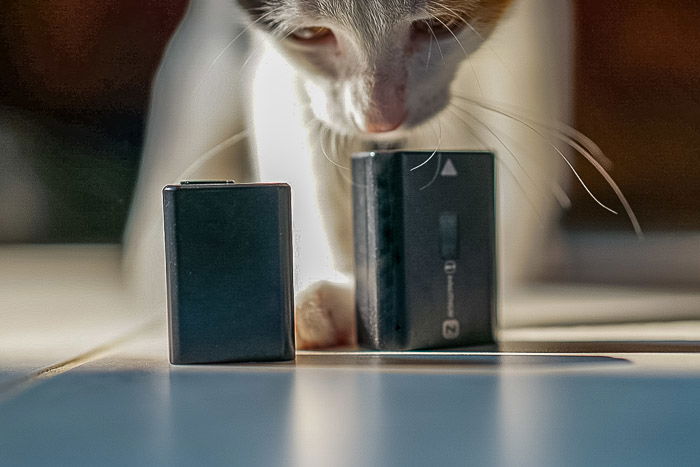
Sony has made changes in response to customer experiences. Using the older a7 II means living with known issues. One example is a confusing menu system.
The a7 III improved the menu system. But there are still complaints. The addition of customizable menus in the newer models is helpful. This makes it easier and quicker to find frequently used features.
This camera cannot shoot in silent mode. But this feature is available in the a7R II, a7S II, and a7 III cameras. Sony added built-in interval shooting to the a7 III series with a firmware upgrade. The a6700 includes both silent and interval shooting.
Sony has chosen not to upgrade the menu system. The last firmware update was in May 2019. But you can download PlayMemories camera apps. These add functionality to your camera when shooting remotely with your smartphone.
For instance, you can take double exposures or simulate long exposures without ND filters. But the PlayMemories camera apps do not work on the newer camera version.
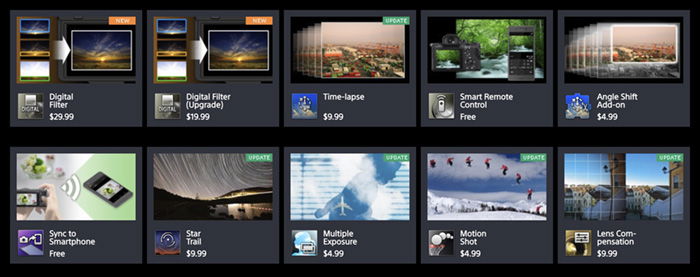
The Sony a7 II is still an excellent camera. The latest Sony Alpha models certainly have more eye-catching stats and specs. But the a7 II still more than holds its own for photography enthusiasts and pros.
I bought this model shortly after its release several years ago, and I continue to carry it with me as a backup body. The body has stood up to the wear and tear of travel photography with very few issues all this time. That means it’s an incredible reliable machine.
The image quality is good, even directly compared to my third-generation bodies. It has nearly the same dynamic range and image stabilization as the newer versions of the a7.
The handling is similar to the newer a7 IV. The slower focusing system and burst rate do not impact my photography in most situations. But the focusing system struggles in low light, which is probably the biggest downside when compared to the newer versions.
You may also find it challenging to track fast action, so sports photographers should look at the Sony a9 series.
Let’s compare the specs for each of the three cameras:

There are a few drawbacks to the a7 II:
But buying a Sony a7 II on sale or used gets you a good, inexpensive full frame mirrorless camera. Plus, quality FE lenses are worth the investment. They will transfer as you upgrade to newer Sony bodies.
At full price, the older a7 II version may not be as attractive as the a7 III, a7 IV, or a6700. Instead, consider spending the extra money to get the Sony a7 IV. Or, for only slightly more, buy the crop sensor Sony a6700.
The Sony a7 IV is the best camera in most departments. But it’s also the most expensive by some distance. So, it’s about managing priorities and expectations.
Professionals with a healthy budget can opt for the a7 IV, but if you’re an enthusiast looking for a reliable full frame mirrorless camera, the Sony a7 II is still a great option.
[scores price="no" product="6490″ tag="expertphotog-20″ toc="no" left_title="Measurement" right_title="Score"]